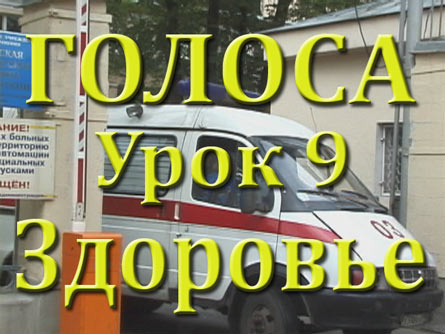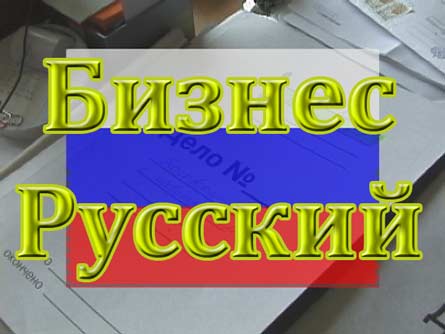TECH FOR TEXTBOOKS
On this page...
TECH FOR TEXTBOOKS
On this page...
TECH FOR TEXTBOOKS
On this page...
WHAT KIND OF TECHNOLOGY?
Today a language textbook is a constellation of technologically based ancillaries in orbit around a traditionally bound book. GOLOSA, the introductory Russian book I have co-authored since its first edition appearance in 1992, is similar to others: it has an audio program, interactive web exercises, and a video component. But for each of these ancillaries, I have sought to use common, off-the-shelf technology to make access to the ancillaries more widely avilable.
THE IMMEDIATE FUTURE...
The fifth edition of GOLOSA, due out in 2010, will be the first textbook for Russian fully supported Pearson Educations's MyLanguageLab suite of web-based offerings, including
- Fully interactive Student Activity Manual
- Fully integrated ebook with integrated audio
- WIMBA based voice-recording and interactive chats
When brought to fruition, these changes will make Golosa the most wired Russian textbook ever produced. When it makes its appearance in 2010, the Pearson MyRussianLab site will benefit from the platform of the MyLabs that Pearson has created for a variety of disciplines.
But even now, with much less ambitious technology in place, Golosa has always been at the technological forefront for Russian-language textbooks:
AUDIO PROGRAM
GOLOSA has one of the most complete audio programs of any textbook: about 20 hours of recorded audio for an introductory book. About half of the audio is dialog repetition, phonetics practice and drill. That leaves a lot of room for listening comprehension, both discrete point (e.g. cardinal and ordinal numbers — one of Russian’s challenges) and global (listening strategies: practice in using background information and prediction).
Normally, no publisher would agree to such a long audio program with its requirement for so much investment in studio time and post-production. But I cut my technological teeth on audio production (analog, in the 1970s and 1980s: Радио русский дом, Русский голос). By the end of the 1990s, computer-based audio production had made tape splicing obsolete, and major audio production was something that I as a co-author was willing to take on. As a result, I was able to cut out the middle-man. We eliminated a third-party studio/production house entirely. I rerecorded and expanded much of the audio program for GOLOSA, including some recording in Russia. As a result, semi-authentic listening comprehnsion items can be made to sound more authentic, even for the earliest levels of the course.
GOLOSA BOOK 1, UNIT 3 Давайте послушаем 1. Listen to the radio ad and decide what is being advertised. |
GOLOSA was the first major textbook to put all its audio on the Web. When I first proposed this in 2000, I met some resistance from the publisher. The cassettes(!), they argued, produced a revenue stream, albeit small. I answered that they also produced major headaches: bad quality audio and distribution and stocking problems. Offering audio on the Web gave us an easy route to distribution, especially now to people with iPods. It also means that mistakes can be corrected an reposted instantly.
Students get involved... The production of the audio program has penty of room for paid undergraduate student participation: interns check for script continuity and do some editing. One of our undergraduate students, Jihane Rachel-Dancik, a non-heritage speaker with no foreign accent in Russian(!), even appeared on mike.
Following the success of put the Golosa audio on the web, I have moved all the audio for the other textbooks with which I have been associated to the web: Political Russian (Simes and Robin) and Russian for Russians (Kagan, Akishina, Robin).
In 2002, GOLOSA, one of the three major textbooks of beginning Russian, then in its third edition, became the first language textbook with a web-video component. Admittedly, the appearance of a web-based video was not the result of a deep search for innovation; rather it was the result of economic realities.
In the 1990s more and more language textbooks came with video on VHS. Production and distribution costs for a single hour-long cassette typically ran into six figures. The sales alone of Russian textbooks could hadrdly support such an endeavor. But with the appearance of prosumer digital video equipment in the new millennium the costs of production dropped dramatically. The World Wide Web (and later free hosting sites such as YouTube) removed the burden of distribution on physical media.
Web distribution had hidden benefits: out of date material could be reshot. Web-based scaffolding could be easily edited.
The rest was a matter of finding people who would agree to appear on camera in country and talk about their daily lives. I trained two additional videographers, Katheleen Evans-Romaine (some of whose work was part of the sample below) and Kristin Bidoshi, who shot some of the segments used in Book 1.
The current GOLOSA video component consists of 20 video segments, thematically linked to each of units in Books 1 and 2. All are scaffolded by Javascript-based interactive exercises, which are reproduced in print in the Student Activities Manual.

Sample Video Exercise Set for GOLOSA (Book 2, Unit 9)
English script available for ACTFL evaluators
Entire GOLOSA Video Set (Available to the public)
OTHER TEXTBOOKS. I am currently working on a third-year level Business Russian book, supported by a CIBER grant. I shot the video for that book in 2007 and produced a pilot episode in 2008.

Business Russian Video Exercise 1
Business Russian Video Exercise 2
These exercises are pilots with incomplete interfaces.
Powerpoint presentations are available on the GOLOSA website for instructors, who can then edit them to their own liking and, if they wish, distribute to their students.
I must admit that for me, Power Point by itself is little more than a quick way of throwing up on the board for explanations of Russian grammar.
However, the real strength of Power Point is released in a third-part add-on called Turning Point, which my university heavily supports.
To that I have devoted a separate Turning Point page, which includes both regular PowerPoint samples and a Turning Point demonstration.
TECH FOR TEXTBOOKS
Rest of the site....
CV Philosophy
Before Computers
Tech for Textbooks
Targeted Captioning
Student Video
Workshops
Enriched E-mail
Audio Webcasts
Interactive Online
Turning Point
Skype
TECH FOR TEXTBOOKS
Rest of the site....
CV Philosophy
Before Computers
Tech for Textbooks
Targeted Captioning
Student Video
Workshops
Enriched E-mail
Audio Webcasts
Interactive Online
Turning Point
Skype
TECH FOR TEXTBOOKS
Rest of the site....
CV Philosophy
Before Computers
Tech for Textbooks
Targeted Captioning
Student Video
Workshops
Enriched E-mail
Audio Webcasts
Interactive Online
Turning Point
Skype